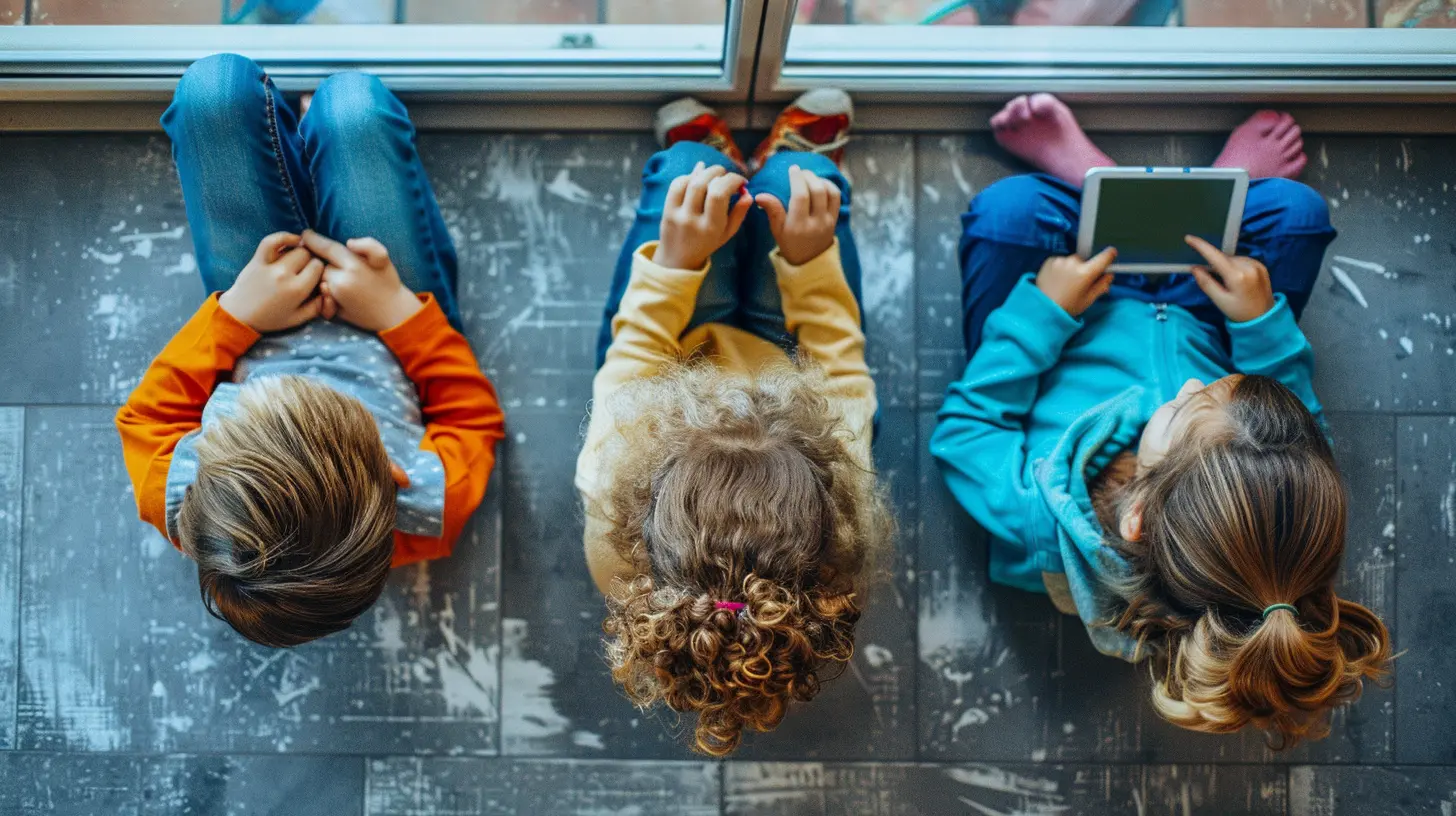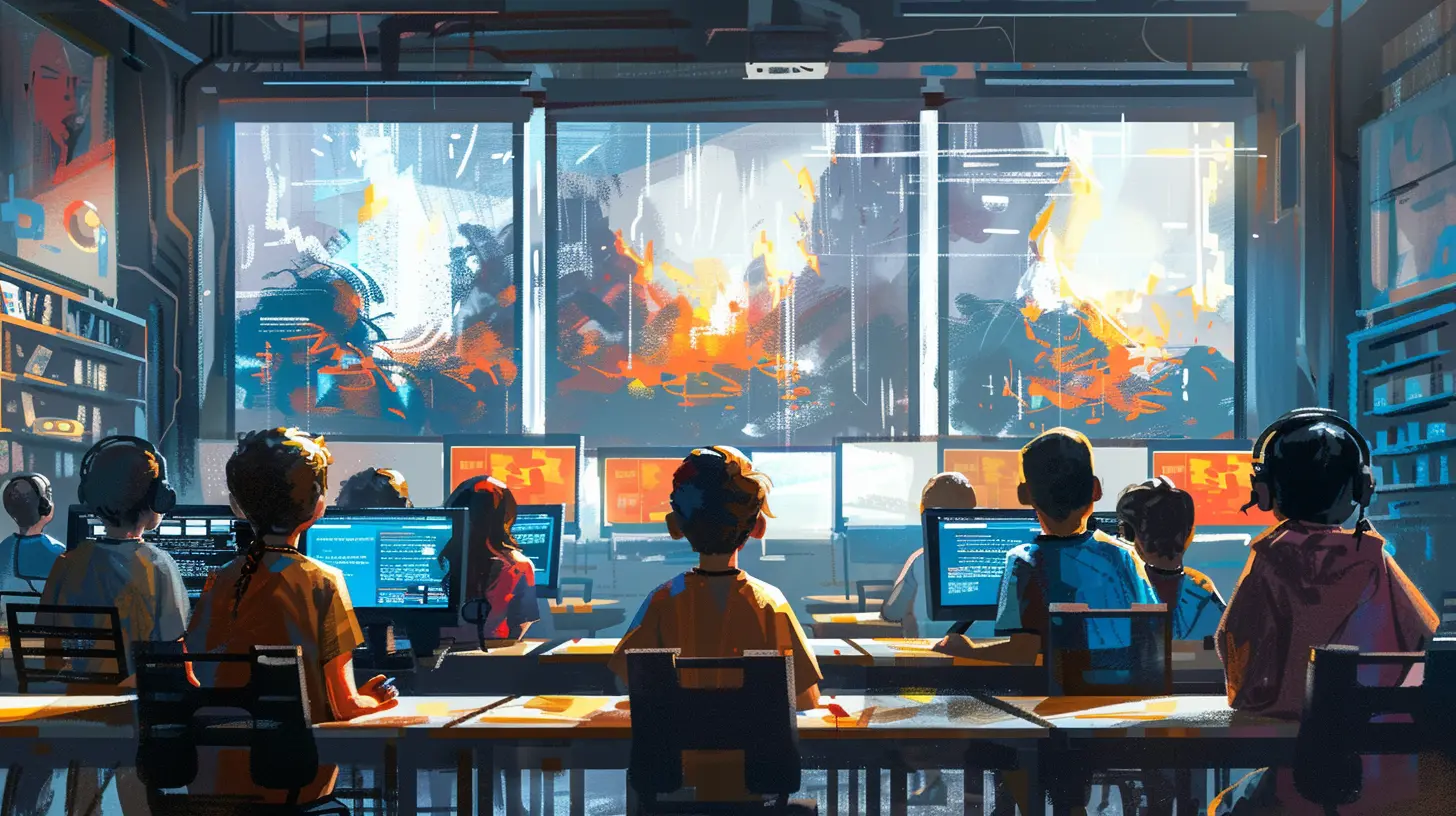Flipped Classrooms: Engaging Students Through Pre-Class Learning
26 November 2025
Picture this: You walk into a classroom, and instead of a teacher standing at the board lecturing for the next hour, students are actively solving problems, collaborating in small groups, and asking deep, insightful questions. Sounds refreshing, right? Welcome to the world of flipped classrooms—where the traditional education model gets turned on its head (literally and figuratively).
In the age of digital learning, flipped classrooms are becoming a game-changer in education. They're transforming passive note-takers into engaged learners and turning homework into something more meaningful.
Let’s dive in and break down how flipped classrooms work, why they’re so effective, and how they’re revolutionizing the way we teach and learn.
What Is a Flipped Classroom, Anyway?
Imagine giving your students the lecture before class starts, and then using classroom time to do the "homework" together. That’s the core of a flipped classroom.Instead of standing and delivering lectures during class, teachers assign instructional content—typically videos, readings, or interactive materials—for students to go through at home. Then, when students come to class, they engage in discussions, hands-on activities, problem-solving sessions, or group projects based on what they learned.
It’s like doing practice drills with a coach standing right next to you instead of watching from the sidelines.
Why Flip? The Benefits You Can’t Ignore
Let’s be honest—no one likes staring at the clock during a long lecture. Students zone out, and teachers often feel like they’re just talking to the wall. Flipping everything around brings energy back into learning. Here's how:1. More Active Learning, Less Passive Listening
In a flipped classroom, students aren’t idle. They're doing, thinking, analyzing, and even teaching each other. When students come to class already familiar with the content, they're better prepared to dive deep and apply what they've learned.2. Self-Paced Learning = Empowered Students
We’ve all been there—zoning out for two minutes and realizing we missed half the lecture. In a flipped model, students control the pace. They can pause, rewind, or re-watch the content as needed, helping them build confidence and truly understand the material.3. Increased Engagement = Better Retention
Classroom time becomes more interactive and personalized. Group activities, discussions, problem-solving—all of these reinforce the concepts and make learning stick. It's no surprise that students tend to remember information better when they've had a hand in working with it.4. Immediate Feedback from Teachers
Instead of correcting homework after the fact, teachers are available right there during problem-solving moments to offer guidance and correct misconceptions in real time.
The Pre-Class Learning Piece: The Secret Sauce
So, what exactly happens before class in a flipped learning model?🎥 Instructional Videos
These are the most popular tools for flipped classrooms. They can be teacher-created, professionally made, or curated from platforms like Khan Academy or YouTube. The key? They’re short, to the point, and packed with clarity.📚 Readings & Interactive Lessons
Some teachers use e-textbooks, articles, or educational apps. Others might assign interactive simulations or games to introduce new topics. The idea is to spark curiosity and prep students before they step foot into the classroom.✍️ Pre-Class Quizzes
A quick quiz after watching a video or completing a reading can do wonders. It ensures accountability and gives teachers a peek into what students understand (or don’t).
What Happens During Class Time?
Now that lectures are out of the way, what’s the magic that happens in the classroom?🤝 Collaborative Activities
Think partner work, group problem-solving, or peer teaching. These activities help students solidify their understanding and learn from one another.🧠 Critical Thinking Exercises
Class time is perfect for diving deeper into material. Debates, case studies, real-world simulations—this is where complex thinking lives.🧑🏫 One-On-One Help
Flipped classrooms free up the teacher to circulate, offer help, and connect with students who might otherwise get left behind. It brings back the human element of teaching.Real Talk: Is Flipping Worth the Effort?
Absolutely. But like anything good, it takes work.✔️ Pros
- Students are more engaged.- Teachers gain insight into student learning.
- You can differentiate instruction more easily.
- Class time is more dynamic and productive.
❌ Cons
- Prep time can be heavy, especially upfront.- Not all students may complete the pre-class work.
- Technology access can be a barrier.
But let's be honest—every teaching method has its challenges. What sets flipping apart is the powerful upside.
Tips for Teachers: How to Flip Your Classroom Without Flipping Out
Starting a flipped classroom might feel like trying to ride a unicycle while juggling oranges. But don’t worry—we’ve got some tips that’ll help you balance everything with ease.🎯 Start Small
You don’t need to flip your entire course overnight. Try flipping just one unit or even a single lesson. Watch how your students respond and tweak as needed.🎬 Keep Videos Short and Engaging
Aim for 5-10 minute bite-sized lessons. Use visuals, analogies, and storytelling to keep attention high. Think of it as making a YouTube video, not a college lecture.✅ Hold Students Accountable
Quizzes, reflection prompts, or discussion boards can ensure they’re watching and absorbing the content.📶 Prepare for Tech Inequities
Make sure all students have access to the material. Offer offline options if needed.🗣️ Get Feedback
Ask your students what’s working and what’s not. Their input is gold when fine-tuning your approach.Students' Viewpoint: Flipping Builds Confidence
From a student’s perspective, flipped learning might seem strange at first. But once they settle in, most recognize its perks.They’re no longer scribbling notes like their life depends on it. They’re talking, building, experimenting, and actually learning. Many report feeling more confident and better supported. That self-belief alone is a game-changer for their academic success.
Myths About Flipped Classrooms (Busted!)
Let’s break down some of the biggest misconceptions:❌ “It’s just assigning homework.”
Wrong. Flipped learning isn’t about piling on more work—it’s about using time more wisely and purposefully.❌ “Students just end up teaching themselves.”
Nope. Teachers are still front and center—just in a different way. They're guiding, coaching, and supporting students every step of the way.❌ “Flipped classrooms only work for older students.”
Think again! Even elementary students can thrive in a flipped environment with the right scaffolding and support.Flipped Classroom Tech Toolkit
You don’t need to be a tech wizard to start flipping. Here are some simple tools to get you going:- Edpuzzle – Add quizzes and interactivity to your videos.
- Screencast-O-Matic / Loom – Easy video recording tools.
- Google Classroom – Share pre-class content and collect feedback.
- Padlet – Collaborative brainstorming made fun.
- Flip (formerly Flipgrid) – Video discussions made easy.
The Future of Flipped: What’s Next?
With hybrid and online learning here to stay, flipped learning is poised to become the new norm. As technology evolves and learning becomes more personalized, the flipped model offers a flexible, student-centered approach that meets the needs of today’s learners.Imagine AI-curated videos based on each student’s pace, or real-time analytics to guide in-class activities. The future is bright—and flipped.
Final Thoughts: More Than a Trend
Flipped classrooms aren’t just a buzzword or a passing fad—they’re a reflection of a deeper shift in how we understand learning. They make space for curiosity, creativity, and connection, turning classrooms into hubs of collaboration rather than passive lecture halls.So if you’re a teacher tired of doing all the talking… or a student longing for more meaningful learning… maybe it’s time to turn things upside down.
Because sometimes, the best way to move forward is to flip everything around.
all images in this post were generated using AI tools
Category:
Innovation In EducationAuthor:

Olivia Chapman

